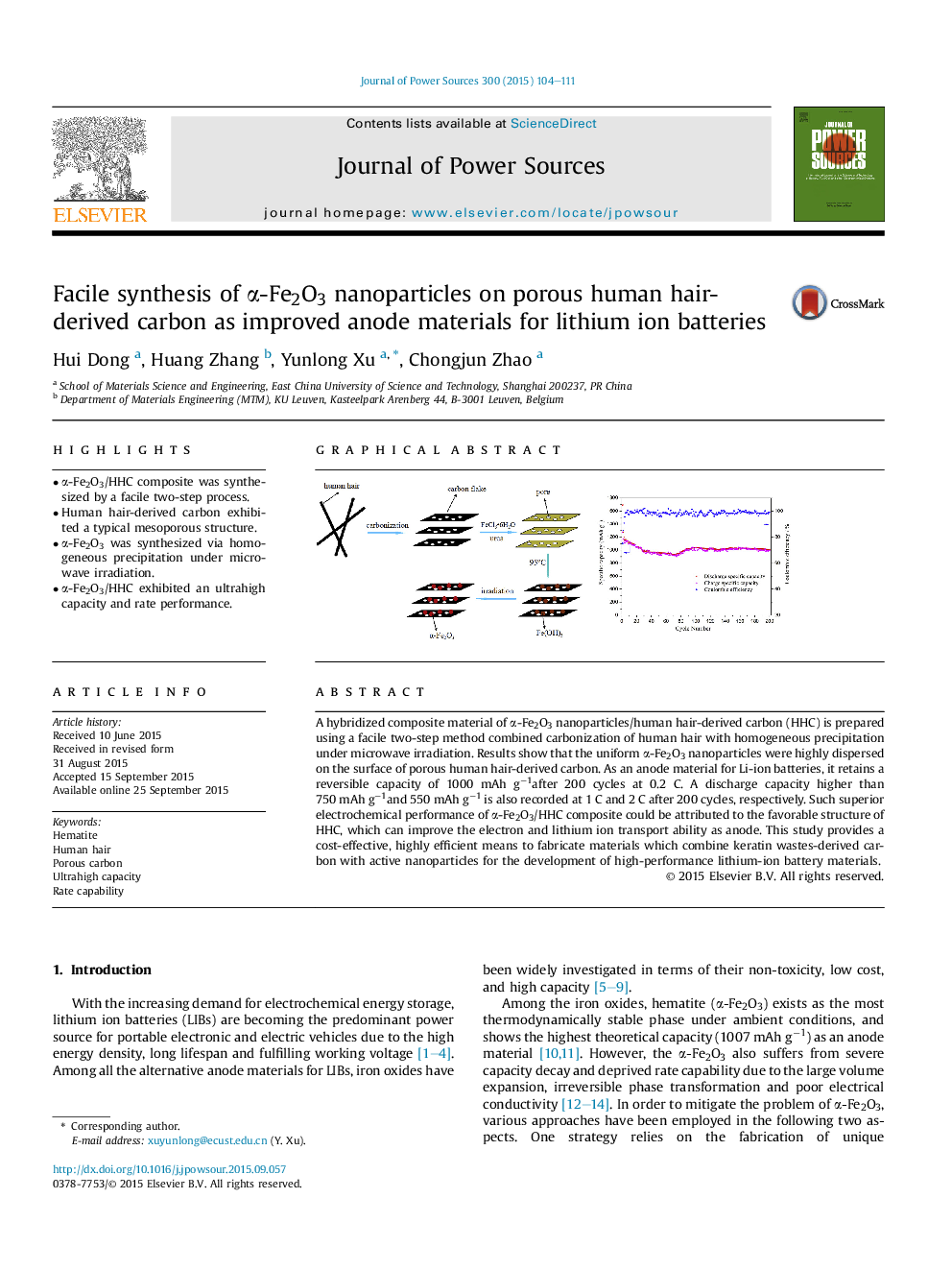| Article ID | Journal | Published Year | Pages | File Type |
|---|---|---|---|---|
| 1285793 | Journal of Power Sources | 2015 | 8 Pages |
•α-Fe2O3/HHC composite was synthesized by a facile two-step process.•Human hair-derived carbon exhibited a typical mesoporous structure.•α-Fe2O3 was synthesized via homogeneous precipitation under microwave irradiation.•α-Fe2O3/HHC exhibited an ultrahigh capacity and rate performance.
A hybridized composite material of α-Fe2O3 nanoparticles/human hair-derived carbon (HHC) is prepared using a facile two-step method combined carbonization of human hair with homogeneous precipitation under microwave irradiation. Results show that the uniform α-Fe2O3 nanoparticles were highly dispersed on the surface of porous human hair-derived carbon. As an anode material for Li-ion batteries, it retains a reversible capacity of 1000 mAh g−1after 200 cycles at 0.2 C. A discharge capacity higher than 750 mAh g−1and 550 mAh g−1 is also recorded at 1 C and 2 C after 200 cycles, respectively. Such superior electrochemical performance of α-Fe2O3/HHC composite could be attributed to the favorable structure of HHC, which can improve the electron and lithium ion transport ability as anode. This study provides a cost-effective, highly efficient means to fabricate materials which combine keratin wastes-derived carbon with active nanoparticles for the development of high-performance lithium-ion battery materials.
Graphical abstractThe α-Fe2O3 nanoparticles/human hair-derived carbon (HHC) composite was prepared using a facile two-step method. As an anode for lithium ion battery, the composite exhibits ultrahigh capacity and excellent high-rate cyclability.Figure optionsDownload full-size imageDownload as PowerPoint slide
